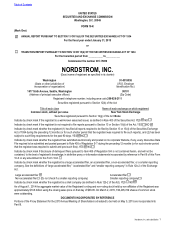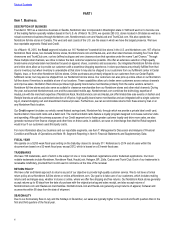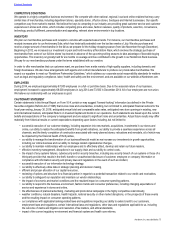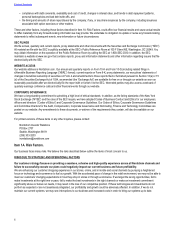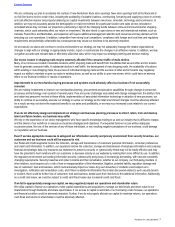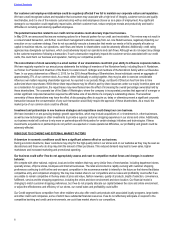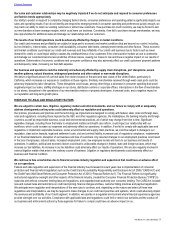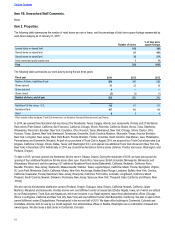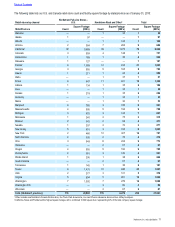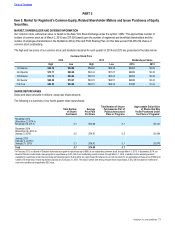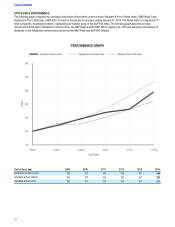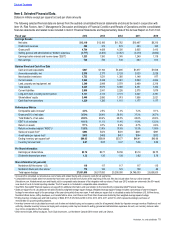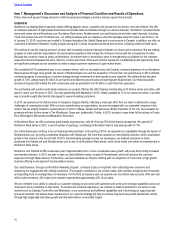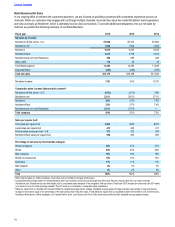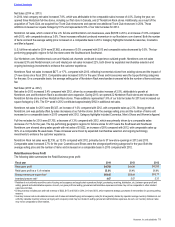Nordstrom 2014 Annual Report Download - page 9
Download and view the complete annual report
Please find page 9 of the 2014 Nordstrom annual report below. You can navigate through the pages in the report by either clicking on the pages listed below, or by using the keyword search tool below to find specific information within the annual report.
Table of Contents
Nordstrom, Inc. and subsidiaries 9
Our sales and customer relationships may be negatively impacted if we do not anticipate and respond to consumer preferences
and fashion trends appropriately.
Our ability to predict or respond to constantly changing fashion trends, consumer preferences and spending patterns significantly impacts our
sales and operating results. If we do not identify and respond to emerging trends in consumer spending and preferences quickly enough, we
may harm our ability to retain our existing customers or attract new customers. If we purchase too much inventory, we may be forced to sell
our merchandise at lower average margins, which could harm our business. Conversely, if we fail to purchase enough merchandise, we may
lose opportunities for additional sales and damage our relationships with our customers.
The results of our Credit operations could be adversely affected by changes in market conditions.
Our credit card revenues and profitability are subject in large part to economic and market conditions that are beyond our control, including,
but not limited to, interest rates, consumer credit availability, consumer debt levels, unemployment trends and other factors. These economic
and market conditions could impair our credit card revenues and the profitability of our credit card business due to factors such as lower
demand for credit, or could impair ability to assess the creditworthiness of our customers if the criteria and/or models we use to underwrite
and manage our customers become less predictive of future losses, causing our losses to rise and have a negative impact on our results of
operations. Deterioration of economic conditions and consumer confidence may also adversely affect our credit customers’ payment patterns
and delinquency rates, increasing our bad debt expense.
Our business and operations could be materially and adversely affected by supply chain disruptions, port disruptions, severe
weather patterns, natural disasters, widespread pandemics and other natural or man-made disruptions.
We derive a significant amount of our total sales from stores located on the west and east coasts of the United States, particularly in
California, which increases our exposure to conditions in these regions. Similarly, merchandise received through west coast ports could be
adversely impacted by labor disruptions. These disruptions could cause, among other things, a decrease in consumer spending that would
negatively impact our sales, staffing shortages in our stores, distribution centers or corporate offices, interruptions in the flow of merchandise
to our stores, disruptions in the operations of our merchandise vendors or property developers, increased costs, and a negative impact on
our reputation and long-term growth plans.
RISKS DUE TO LEGAL AND REGULATORY FACTORS
We are subject to certain laws, litigation, regulatory matters and ethical standards, and our failure to comply with or adequately
address developments as they arise could adversely affect our reputation and operations.
Our policies, procedures and practices and the technology we implement are designed to comply with federal, state, local and foreign laws,
rules and regulations, including those imposed by the SEC and other regulatory agencies, the marketplace, the banking industry and foreign
countries, as well as responsible business, social and environmental practices, all of which may change from time to time. Significant
legislative changes, including those that relate to employment matters and health care reform, could impact our relationship with our
workforce, which could increase our expenses and adversely affect our operations. In addition, if we fail to comply with applicable laws and
regulations or implement responsible business, social, environmental and supply chain practices, we could be subject to damage to our
reputation, class action lawsuits, legal and settlement costs, civil and criminal liability, increased cost of regulatory compliance, restatements
of our financial statements, disruption of our business and loss of customers. Any required changes to our employment practices could result
in the loss of employees, reduced sales, increased employment costs, low employee morale and harm to our business and results of
operations. In addition, political and economic factors could lead to unfavorable changes in federal, state and foreign tax laws, which may
increase our tax liabilities. An increase in our tax liabilities could adversely affect our results of operations. We are also regularly involved in
various litigation matters that arise in the ordinary course of business. Litigation or regulatory developments could adversely affect our
business and financial condition.
We continue to face uncertainties due to financial services industry regulation and supervision that could have an adverse affect
on our operations.
Federal and state regulation and supervision of the financial industry has increased in recent years due to implementation of consumer
protection and financial reform legislation such as the Credit Card Accountability Responsibility and Disclosure Act of 2009 (“CARD Act”) and
the Dodd-Frank Wall Street Reform and Consumer Protection Act of 2010 (“Financial Reform Act”). The Financial Reform Act significantly
restructured regulatory oversight and other aspects of the financial industry, created the Consumer Financial Protection Bureau (“CFPB”) to
supervise and enforce consumer lending laws and regulations, and expanded state authority over consumer lending. The CARD Act included
new and revised rules and restrictions on credit card pricing, finance charges and fees, customer billing practices and payment application.
We anticipate more regulation and interpretations of the new rules to continue, and, depending on the nature and extent of these new
regulations and interpretations, we may be required to make changes to our credit card practices and systems, which could adversely impact
the revenues and profitability of our Credit segment. In addition, we operate in a regulated environment where financial supervisory agencies
provide oversight over our activities. Compliance with applicable laws and regulations could limit or restrict our activities and the conduct of
our business and enforcement actions by those agencies for failure to comply could have an adverse impact on us.

